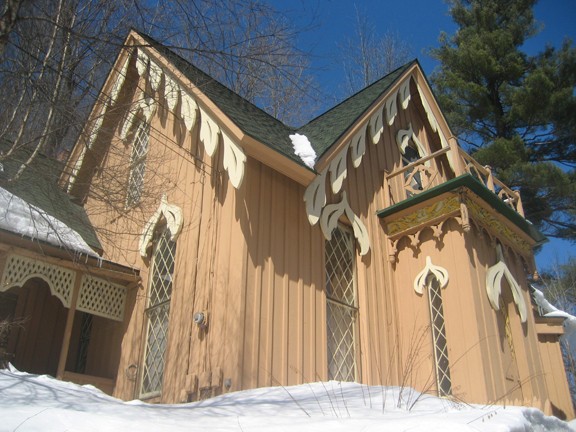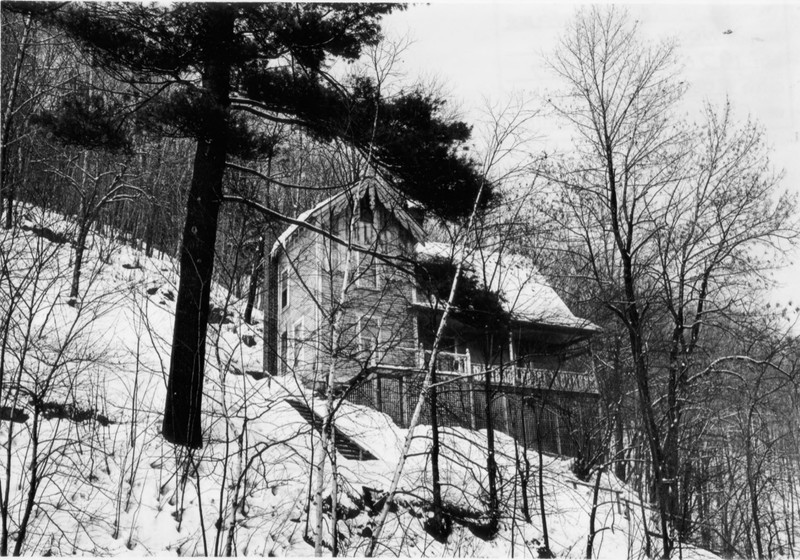Athenwood and Thomas W. Wood Studio
Introduction
Text-to-speech Audio
Images
2008 Photo Athenwood & Thomas W. Wood Studio

1974 Photo of Athenwood & Thomas W. Wood Studio via the National Parks Service

Backstory and Context
Text-to-speech Audio
Built during the last half of the nineteenth-century in Montpelier stand two cottage buildings referred to as Athenwood and the Thomas W. Wood studio. The buildings are also associated with Montpelier native Thomas Waterman Wood, one of the most popular painters of the nineteenth century. Wood designed the buildings himself, starting with Athenwood in 1850 followed by his art studio during the 1880s.
Wood built Athenwood (1850) with the intention to use it as a summer home, which demonstrates Montpelier's role as a summer resort during the mid-nineteenth-century. With a Rural Gothic design, the building's name comes from the Greek mythological figure, Athena. Wood chose the name as a tribute to his wife Minerva, whose name comes from the Greek goddess of wisdom. The house decor included numerous, small marble statues of Athena's head. In addition to functioning as a summer retreat, Athenwood served as Wood's artist studio until he built the second, separate cottage in the 1880s.
Several of Montpelier's citizens worked as the subjects and models for Wood's paintings. Wood also served as President of the American Water Color Society and the National Academy and proved to be a significant benefactor of Montpelier. Thus, Wood and his art studio evolved into a substantial part of the Montpelier culture and now exist as a notable aspect of the city's history.
Sources
Merrill, Perry Henry. Montpelier: The Capital City's History, 1780-1976 Paperback. Montpelier: Merrill, 1976
National Park Service. "Athenwood & Thomas W. Wood Studio." Central Vermont: Explore History in the Heart of the Green Mountains. Accessed August 21st 2019. https://www.nps.gov/nr/travel/centralvermont/cv21.htm.
Roomet, Louise. "Nomination Form: Athenwood & Thomas W. Wood Studio." National Register of Historic Places. nps.gov. June 13, 1974. https://npgallery.nps.gov/NRHP/GetAsset/NRHP/74000259_text
By GearedBull, Jim Hood - Own work, CC BY 3.0, https://commons.wikimedia.org/w/index.php?curid=3799532
https://npgallery.nps.gov/AssetDetail/db918cad-d5ca-4f3c-b109-7362011aff69/
